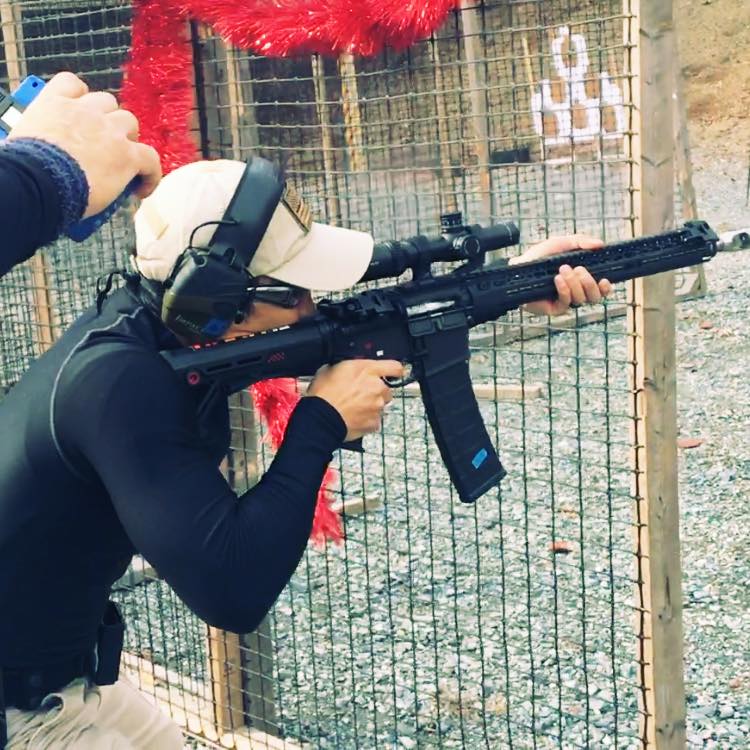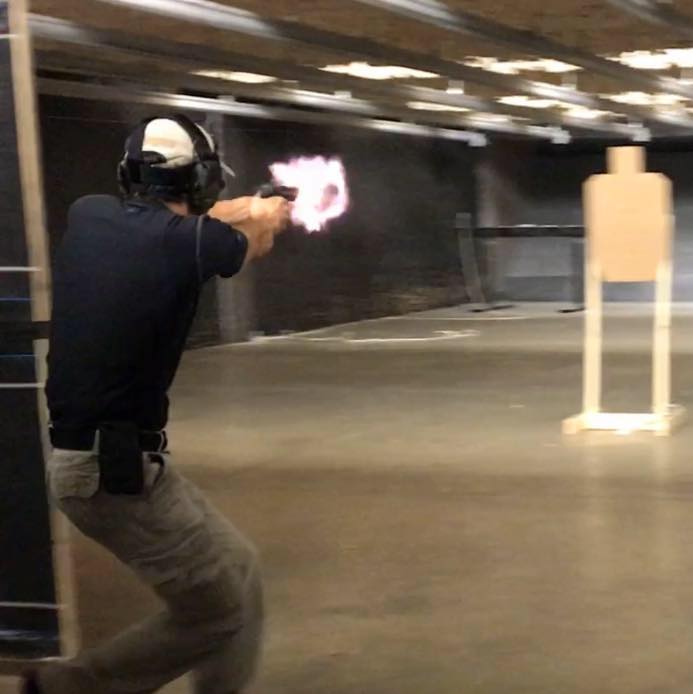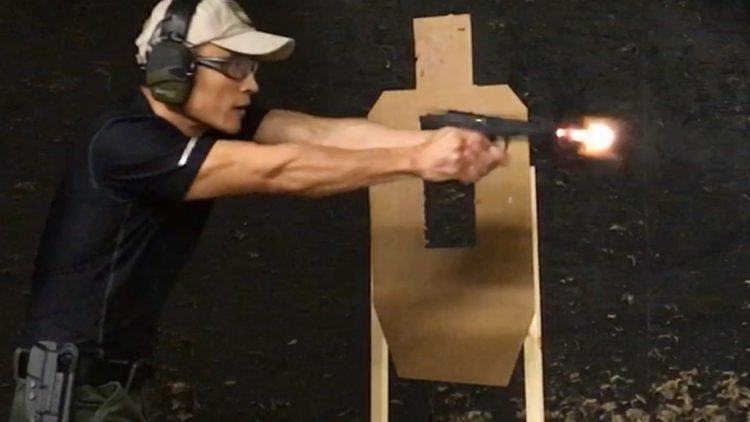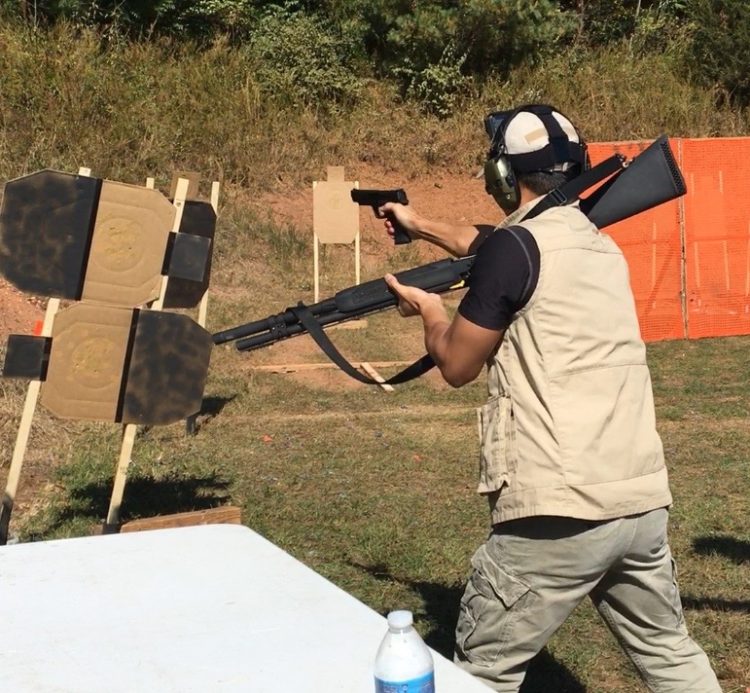Shooting is an activity that is physically demanding so it stands to reason we focus our training through physical means. While it is essential to dry-fire, shoot drills and train our bodies to develop ‘muscle memory’ (which is somewhat of a misnomer because muscles don’t have memory, but that’s a topic for another discussion) to be one with the gun, we hardly discuss the mental side of shooting and how we can improve our minds to improve our shooting.
“When you’re thinking about shooting, you’re not shooting,” -Jerry Miculek
This quote by Jerry Miculek hits the nail on the head because we know how our thoughts can hinder our performance. Many activities in shooting happen so fast that our conscious mind can’t process it to make a conscious decision, hence we ‘fall back on our training.’ We want to train our body and mind so that we can react and perform automatically. Athletes and warriors know this as getting into ‘the zone’, described as a mental state of operation in which a person performing an activity is fully immersed and hyper-focused at the task at hand. It’s as if time and space seem to distort and you are one with the moment and decisions are made without conscious thought. So, what are some ways to get thoughts out of the way? One method the military uses is a technique called ‘combat breathing’. This technique is used to help soldiers focus, gain control and manage stress. Studies has also shown that it aids in controlling anxiety and panic during dangerous situations such as combat. It’s a simple technique anyone can do; breath in deep with a 4-count and hold your breath with another 4 count. Then exhale for while counting to 4. Do this 3 to 5 times to go to your happy place.
The technique I’ve been using to control my thoughts is similar to combat breathing, but in an extended form. You may have heard of it as meditation. Hold on! Before you dismiss this as some new age, soy-boy, hog-wash consider this: martial artists in the east practice meditation as part of their curriculum. The warriors of the past intuitively knew about the connection between the mind and body. Olympic athletes also practice a form of ‘mindful meditation’, called visualization to aid in their training. This technique is performed by closing the eyes and visualizing every step, every turn, every movement of the event they’re participating in. They block out all distractions and noise to be present in the moment; within their minds. There are also scientific studies, with empirical evidence, that shows some remarkable effects of meditation on the brain. Here is one such study by a group of Harvard neuroscientists:
Meditation experience is associated with increased cortical thickness
“Our initial results suggest that meditation may be associated with structural changes in areas of the brain that are important for sensory, cognitive and emotional processing. The data further suggest that meditation may impact age-related declines in cortical structure.” -Sara Lazar
So, let me dispel a few myths surrounding meditation:
Myth #1: It’s a religious ritual.
It is not a religious or spiritual ritual thus it will not violate anyone’s beliefs. It’s considered a mental exercise to clear the mind.
Myth #2: Meditation takes too long.
Meditation doesn’t have to take a long time; you can meditate as little as 5 minutes if you like.
Myth #3: Meditation is difficult.
It may seem difficult at first, but with a little practice it will become second nature.
If you read this far then it means you are interested in training your mind as well as your body. The point of meditation is to control your focus and your thoughts. When you sit down in a quiet place without any distractions your brain will start to do its job and think. Now, are you consciously thinking about the thoughts that pops up or does it seem to come out of nowhere? The universe abhors a vacuum and where there is emptiness the universe tries to fill it. When you try to empty your mind, your brain will try to occupy it with thoughts. Your task in meditation is to put away those distracting thoughts to be one with yourself and the moment. Be honest with yourself. Do you really control every thought that your brain conjures up? If not, then how do you really know yourself and your thoughts? It’s time to take back control.
“Knowing others is intelligence; knowing yourself is true wisdom. Mastering others is strength; mastering yourself is true power.” -Lao Tzu, Tao Te Ching
Entire books can be written about meditation so in this article we will focus on the basics. As stated above, the purpose of meditation is to clear your mind and control your thoughts. When thoughts pop up try not to judge it or let it affect you. Just observe and put it aside. There are many ways of focusing your attention away from your thoughts. If you are a visual type of person you can picture a rotating sphere, such as a basketball, football, a globe, etc., in your mind’s eye and focus your undivided attention to it. When you get to a point of total concentration and focus, the world around you will melt away. Kinesthetic type people, people who use sensation as their primary sensory tool, can focus on their breaths. Observe how the breath goes in through your nose, the diaphragm expanding to bring down the breath to your lungs. Then focus on the sensation of exhaling through the mouth. Deep breathing is recommended for meditation.
Combat breathing focuses on counting during breathing; in meditation you can count and focus on the sensation of breathing to focus your attention. If you are a person who uses sounds as their primary sensory tool a mantra or the proverbial ‘Ohm’ chant may be the best method. There are diverse opinions when it comes to the practice of meditation but I believe the technique should fit your personality and how you sense the world. With some practice you will be able to learn which technique works best for you and maybe even learn something about yourself.
By training to calm the mind I believe we can improve our shooting performance. Our conscious mind isn’t fast enough to take in all that information then process it in hundredths of seconds to make a conscious decision; thus, we train hard to allow our subconscious mind to work. Meditation can be a powerful tool that trains the mind to clear itself of clutter and help to focus our attention.
About the author:
*The views and opinions expressed on this website are solely those of the original authors and contributors. These views and opinions do not necessarily represent those of Spotter Up Magazine, the administrative staff, and/or any/all contributors to this site.







[…] this activity, yet few truly know how beneficial meditation can be to your ability to focus. Meditation trains your brain to shut down the many thoughts that would distract you, and helping you to not […]